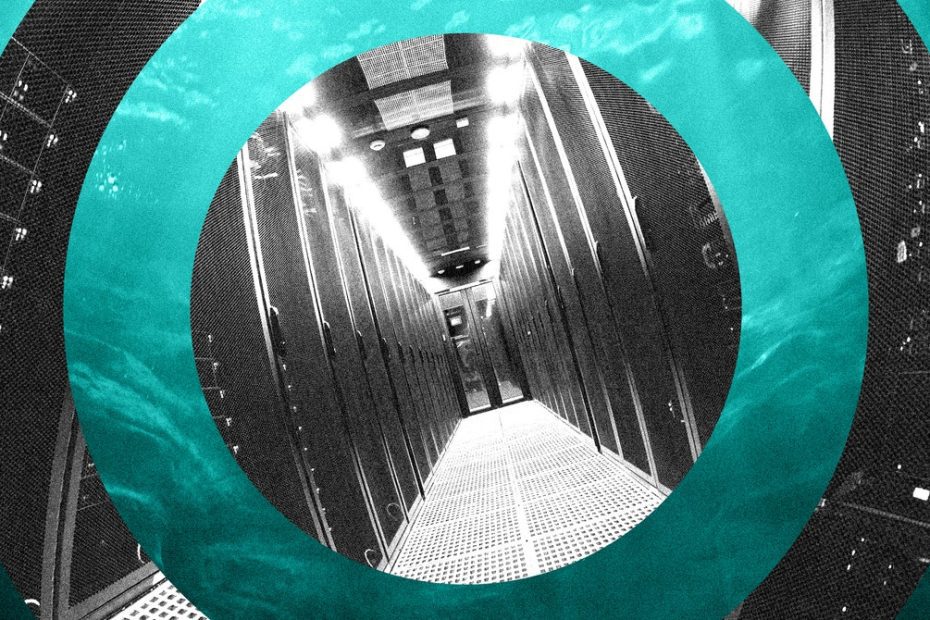NetworkOcean isn’t the only one with ambitions. Subsea Cloud, founded in 2021 in the U.S., operates about 13,500 computer servers in unspecified underwater locations in Southeast Asia to serve clients in AI and gaming, says the startup’s founder and CEO, Maxie Reynolds. “It’s an emerging market,” she says. “But it’s the only one right now that can sustainably handle the current and expected load.”
Subsea has obtained a permit for each location and is using remotely operated robots for maintenance, Reynolds said. The company plans to launch its first underwater GPUs next year and is also considering private locations, which Reynolds said would reduce the complexity of permitting. Subsea claims it does not significantly increase water temperatures, although it has not published independent assessments.
NetworkOcean also believes it will cause negligible warming. “Our modeling shows a 2-degree Fahrenheit change over an 8-square-foot area, or a 0.004-degree Fahrenheit change across the surface of the water body,” Mendel says. He takes confidence from Microsoft’s finding that water a few feet downstream of the test warmed only slightly.
Protected bay
Projects in the Bay Area could raise water temperatures by no more than 4 degrees Fahrenheit at any one time and in any place, said Mumley, the former water authority official. But two biologists who spoke to WIRED said any increase worries them because it could incubate harmful algae and attract invasive species.
Shaolei Ren, an associate professor of electrical and computer engineering at the University of California, Riverside, who studies the environmental impact of AI, compares plans for an underwater data center to NetworkOcean’s announced capacity, when fully utilized, equivalent to running about 300 bedroom heaters. (Mendel disputes the concern, noting Project Natick’s seemingly minimal impact.) A few years ago, a project that proposed using water from the San Francisco Bay to cool a land-based data center was rejected after public concerns were raised, including about the temperatures.
San Francisco Bay averages about a dozen feet deep, with saltwater from the Pacific Ocean flowing from under the Golden Gate Bridge and mixing with fresh runoff from much of Northern California. Experts say it’s not clear whether any location in the vastness would be suitable for more than a small demonstration among the muddy, shallow, salty and turbulent parts.
In addition, obtaining permits could require proving to at least nine regulatory agencies and several critical nonprofits that a data center would be worthwhile, according to spokesmen for the agencies and five experts on Bay Area politics. For example, under the law administered by the Conservation and Development Commission, the public benefit of a project must “clearly outweigh” its harm, and developers must show that there is no suitable site on the land.
Other agencies are weighing waste emissions and harm to the region’s handful of endangered fish and birds (including the notorious Delta smelt). Even a temporary project requires approval from the U.S. Army Corps of Engineers, which controls the obstruction of shipping and boats, and the water board. “For example, temporarily placing a large structure in a seagrass bed could have lasting effects on the seagrass, which is critical habitat for certain fish,” says the water board’s Lichten.
NetworkOcean’s Kim tells WIRED that the company is aware of the concerns and is avoiding sensitive habitats. His co-founder Mendel says they have contacted one of the region’s regulators. In March, NetworkOcean spoke with an unnamed U.S. Coast Guard representative about testing on the bay floor and pumping seawater as a coolant. The company later changed its current plans for the surface environment, which do not involve pumping. (A Coast Guard spokesperson declined to comment without providing more clarity on who NetworkOcean reportedly contacted.)
Kim and Mendel say they are eyeing other locations in the U.S. and abroad for permanent installations, but they won't name names. They are in talks with the relevant regulators.
Mendel insists the “SF Bay” test announced last month will go ahead — and soon. “We’re still building the ship,” he says. A community of marine scientists will have their thermometers handy.

